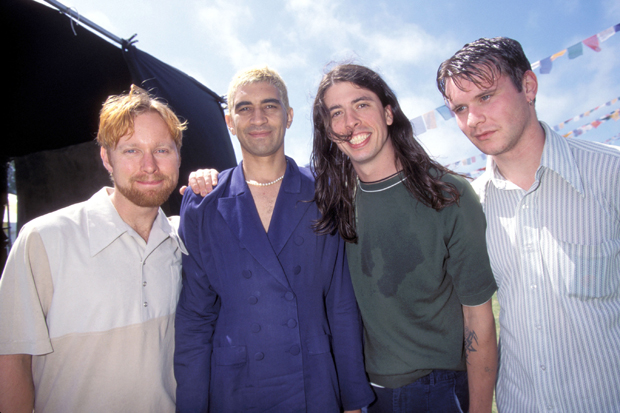The Foo Fighters emerged from the ashes of Nirvana, but the band's true roots lay in the years of personal recordings made by leader Dave Grohl. The former Nirvana drummer had played guitar and written songs since he was a Washington, D.C., teenager, while also playing drums in several hardcore bands. At 17, Grohl became the drummer for the veteran punk act Scream. In 1990 he joined Nirvana, but continued to work on his own material during breaks from the road and studio. After finishing Nirvana's Nevermind, Grohl returned to D.C. to record several tracks, which were released on the cassette-only Pocketwatch. Plans for another cassette release were shelved with Kurt Cobain's 1994 suicide.

Later that year Grohl entered a studio with friend and producer Barrett Jones to record what would become the first Foo Fighters album. Grohl played all the instruments himself (with the exception of the song "X-Static," which featured guitar by Greg Dulli of the Afghan Whigs). Though he had written and sung just one Nirvana song (the B-side "Marigold"), Grohl demonstrated a flair for pop hooks and driving guitar rock. (The name Foo Fighters came from what American World War II pilots called unidentified fireballs spotted over Germany.) Grohl signed with Capitol and formed a band in time for a 1995 tour, recruiting bassist Nate Mendel and drummer William Goldsmith from the freshly-broken-up Sunny Day Real Estate. Pat Smear, the former Germs guitarist who had joined Nirvana for its final tour, also joined. Foo Fighters (Number 23) was released in 1995 and spawned the Modern Rock hits "This Is a Call," "I'll Stick Around," and "Big Me." Goldsmith quit during the making of The Colour and the Shape (Number Ten, 1997), the first Foo Fighters album recorded as a band, and was replaced by Taylor Hawkins (Alanis Morissette). The album contained the Modern Rock hits "Monkey Wrench," "My Hero," and "Everlong." Smear quit and was briefly replaced by Franz Stahl (Scream) and then Chris Shiflett (No Use for a Name, Me First and the Gimme Gimmes), solidifying the lineup to date. Grohl relocated to Virginia and recorded There Is Nothing Left to Lose (Number 10, 1999) in his basement; the album included "Learn to Fly" (Number 13, 2000).
In 2001 the group began recording its fourth album in Los Angeles, but stopped before finishing. Grohl took a break from band-leading by getting behind the drums again for Queens of the Stone Age's 2002 album Songs for the Deaf. Refreshed, Grohl gathered the Foos back together and re-recorded almost the entire album at his Virginia home studio, released as One by One (Number Three, 2002). The album further consolidated the band's place as the well-loved elder statesmen of alt-rock.



